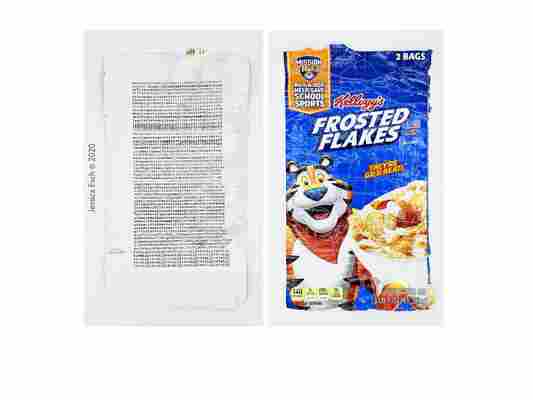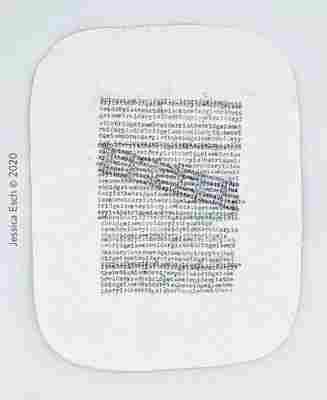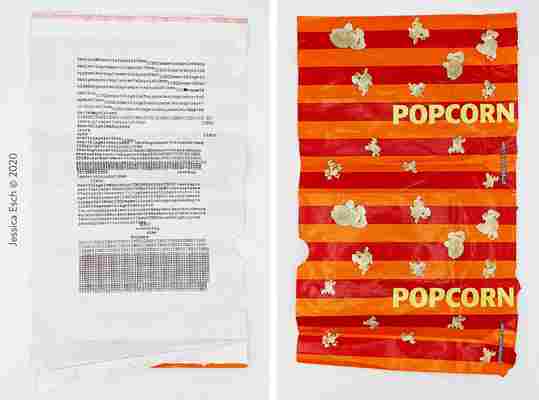
My name is Jessica Esch. I’m a writer and illustrator in Portland, Maine. I’ve been lost in the Archives of American Art since July. Don’t send help. I’m here to stay.
I rabbit hole, you see. When something or someone interests me, I dive in deep and explore. I’m smitten with people’s stories told in their own words, primarily women over the age of sixty reflecting on their lives and their work. By sharing their stories and perspectives, these women broaden my thinking and inspire me to be bolder.
The Archives is chockablock with them. With a global pandemic keeping us physically apart, I’ve never been without company thanks to the Nanette L. Laitman Documentation Project for Craft and Decorative Arts in America and a reading spree of interview transcripts.
My artistic output is through the roof because of a new project Fill in the Blanks that I began while in the Archives. A mashup of prose and design, the work started when I threaded pearls dropped by Barbara Lee Smith in her oral history through my typewriter to create a multi-sensory experience where words and found materials become meditative chants and unexpectedly beautiful. Fill in the Blanks plays with both the repetition of life in a global pandemic and the centering quality of mantras in the face of uncertainty.
Each Fill in the Blanks piece starts by mining oral histories for the words I need to hear and want to sit with. The Archives is a treasure trove that feels bottomless. By capturing words without spaces or punctuation, each piece conveys the constraints of self-isolation and physical distance while requiring people to reconstruct the original quote letter by letter, a process I call typelooping.

I created typelooping to provide focus, stamina, and surprise in this unsettling and routine time. I use it to pound encouragement, patience, and whatever else I need into my days. Conversations had by others that spark conversations with myself. Balm to my chapped days.
I come to this delight in oral histories with a history of my own. I love reading books of correspondence. I relish in the transcript format of Melville House’s The Last Interviews series. I even prefer unedited podcast episodes over those sliced and diced in post-production. (Cheers to Krista Tippett’s On Being podcast for offering both!)
Interviews that have not been condensed or edited cut to the chase. They capture the person as they are on that day in that particular moment. Before I found the transcript of sculptor Ursula von Rydingsvard’s 2011 interview in the Archives, I’d never actually read an oral history .
Now I simply cannot get enough. Sheila Hicks . Dorothea Lange . Elma Lewis . Kay WalkingStick . Oh my, Eleanor Antin ! Betty Parsons . Eleanor Dickinson . Peggie Hartwell . Imogene “Tex” Gieling . Louise Nevelson . Elaine de Kooning . Lenore Tawney . Juana Alicia . Lee Krasner ! Of all the oral histories I’ve read, textile artist Barbara Lee Smith remains my all-time favorite. I loved it so much, I had to tell her .
I explore the Archives the same way I strolled the stacks of my library and the shelves of my local bookstore before the pandemic—propelled by curiosity. It introduced a steady stream of people into days once filled with book readings and artist talks. While many come to the Archives with a person or topic in mind, my initial forays were random. However, it’s now the first place I look when I start down a new rabbit hole.

Oral histories offer readers a front-row seat to lives well lived. They are conversations that exist in a certain period of time yet are timeless. The white background of the PDF never fades, the nondescript font never ages, the black of the type never dulls. Each interview feels current, despite its age.
Typelooping and my Fill in the Blanks series provide a playground for what I find in the transcripts. Instead of just tucking key phrases into a journal to remember, I found a way to dance with them, never quite knowing who is leading. The words create their own music and add elements of surprise to my cookie-cutter days of sheltering in place.
Through primary sources and technology old and new, I found a way to grow and expand my own galaxy while isolating in place from nearly all the interesting people I know. What a gift it’s been to expand in a time of contraction. And a master class in how to live a creative life.
One world closes. Others open.
If you know where to look.
Explore More:
